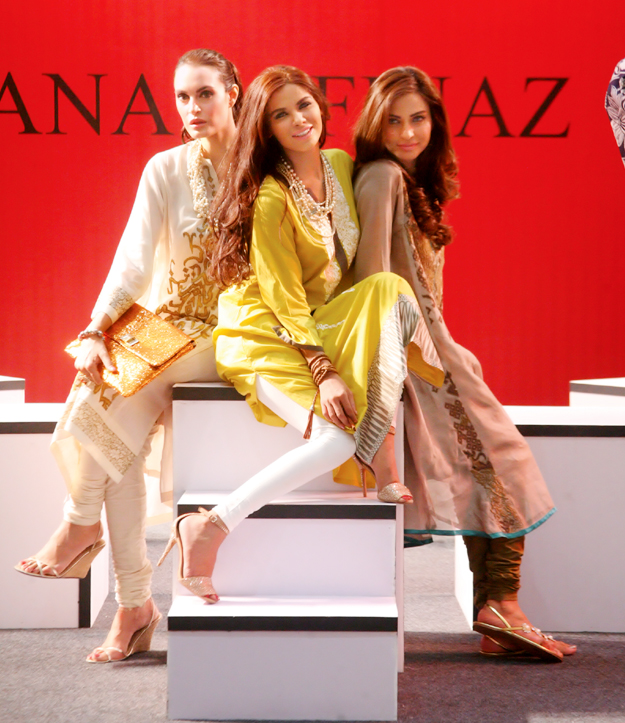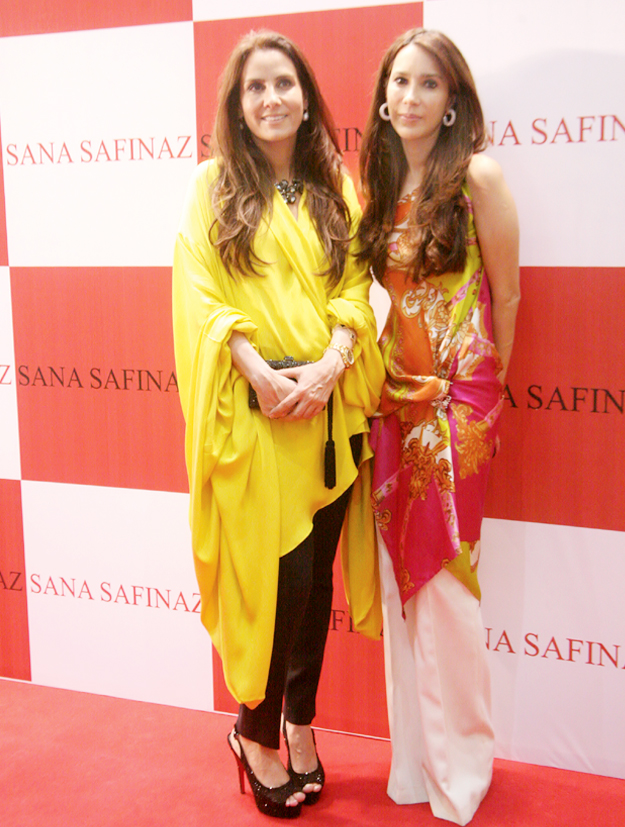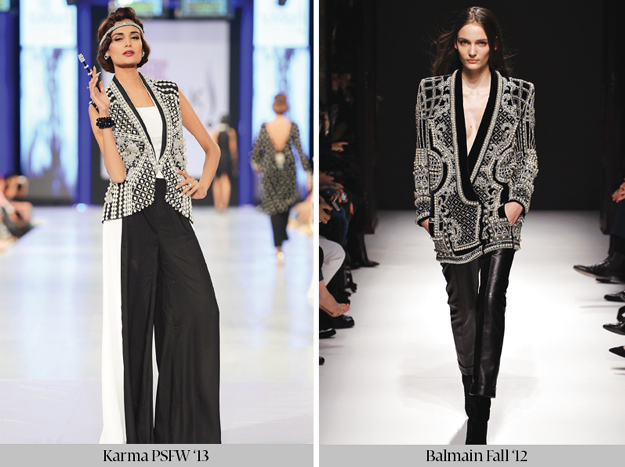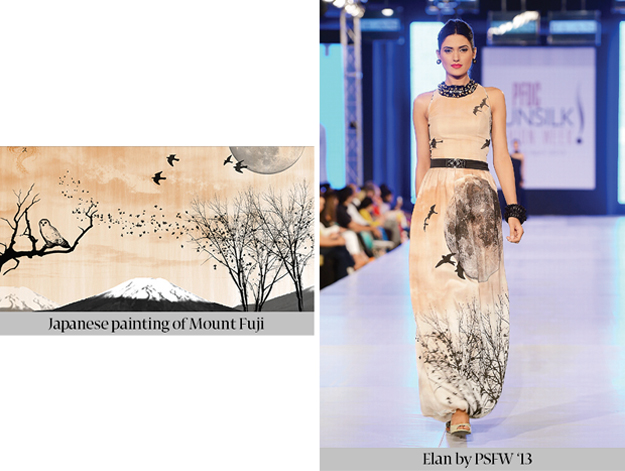KARACHI: You could have been on Bond Street. SanaSafinaz held a media preview at their new Dolmen City Mall store that enthralled even the most jaded media types and socialites. Pitched as Pakistan’s answer to Topshop and Zara, the store offers an exciting mix of prêt wear and accessories.
The store concept and pricing policy may be high street but the feel of the Dolmen City Mall store is pure high-end luxury boutique. With its chic black-and-white theme, blue and white urns and clean lines, the boutique is an oasis of contemporary luxury. The racks are gloriously uncluttered unlike the “crammed to bursting point” racks in many local stores. With its stylish glass display cases and spacious seating, the ambience of the boutique is more Gucci than Topshop.

There was a doubt in some people’s minds that SanaSafinaz would pitch their retail outlet solely at the western wearing crowd; but this smart couple knows their market too well. While the store does have an extensive western and fusion range, the bulk of their prêt is pretty, wearable and unashamedly Eastern. From the lunching aunties to trendy college chicks, there’s something for everyone. SanaSafinaz has put together a design team headed by Ather Hafeez to handle the prêt-a-porter line for the store. While Hafeez’s touch is clear, it is obvious that SanaSafinaz keep a close eye on things, as overall, the collection has the unmistakable SanaSafinaz signature.
SanaSafinaz had promised a high-street shopping model and they were true to their word. The pricing wasn’t complete but the outfits that were tagged were very reasonable. Elegant, attractive joras with that indefinable SanaSafinaz aesthetics in the same price range as Khaddi or Sheep. No wonder people were pinching themselves to check whether they were dreaming. More than one person opined that they’d be queuing up on opening day, leading some to speculate that the store would be trashed in the sort of stampede that used to accompany SanaSafinaz’s lawn exhibitions. No chance of that however — there’ll be a queuing system with only 40 people allowed in-store at a time to allow customers to shop in peace. For those not in Karachi, Lahore or Islamabad their retail line will be available online in about a month. New designs will hit the stores every two weeks.

While the clothes had fashionistas drooling over them, it was the accessory section that almost stole the show. Pretty chappals, belts and scarves drew the eye. Several fashion lovers decided on the spot to start wearing scarves on their wrists. The statement necklaces simply screamed, “buy me”. There was a wide collection of bags, from outsize clutches to totes. There was a Chanel-inspired cross-body quilted purse in bright yellow and gorgeous version of iconic Alexander McQueen knuckle-duster clutch. Make no mistake — these were not fake or copies of the originals. The bags simply used design elements of the originals. It was all very Topshop and in the best possible taste.
SanaSafinaz may be the first big name designer to venture into the retail market for accessories but what they are doing is not entirely new. There are several local stores offering high quality bags inspired by big-name western designers. Pedro does a lovely version of the sought-after Celine luggage tote while Charles & Keith is known for sailing close to the wind with its versions of designer purses. The Hub similarly produces its own version of designer originals. Similarly Accessorize offers a wide range of Boho-chic accessories. Nadia Kassim has done some excellent Jimmy Choo-inspired chappals.

However, what makes SanaSafinaz line of accessories so covetable is their taste. SanaSafinaz have always based their brand on what they would wear themselves. They have put together a collection that looks intensely high fashion. The quality of every piece is exceptional. No one else is doing the sort of statement necklaces and iconic belts that are on display at SanaSafinaz. Their choice of prints for their scarves is super chic. Their high-end customers may carry the original bags, but there will be plenty of takers for the SanaSafinaz knuckle duster. With that said, it would be nice to see SanaSafinaz venture into their own line of unique shoes and bags, stamping their own signature on an original line.
All in all though, the duo’s retail store is simply superb — sophisticated, stylish and endlessly fascinating. Fashion lovers get ready for a fantastic shopping experience.
Oxford-grad Salima Feerasta is a social commentator and lover of style in any form or fashion. She blogs at karachista.blogspot.com and tweets @karachista
Published in The Express Tribune, April 25th, 2013.
Like Life & Style on Facebook for the latest in fashion, gossip and entertainment.








































